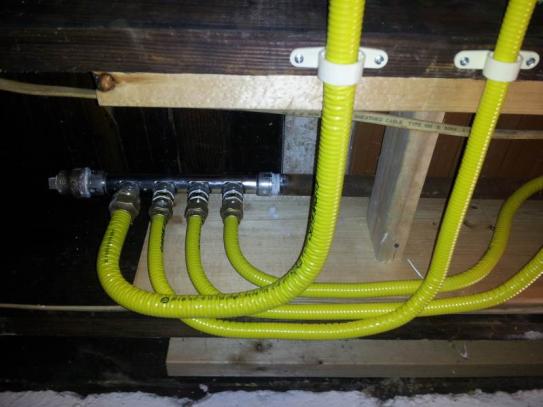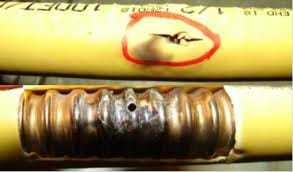Living in a multi-story home or townhouse can come with an unexpected consequence: unusual climate control difficulties. Trying to get every level of a multi-story home a nice, comfortable temperature can be tricky. This is especially true if you’ve recently moved in and haven’t had the time to familiarize yourself with the property’s thermostat. With a little bit of HVAC knowledge, though, you can find a simple and effective way to get a cozy temperature for your home, no matter what room you’re in.
THERMODYNAMICS 101: HOT AIR RISES / COLD AIR FALLS
It has probably been a while since you took a science class, so you might not remember that hot air always rises and cold air always falls. The nature of heat is movement and expansion, so the heated air molecules push their way upwards as the colder air contracts and sinks. For this reason, the highest floor in your multi-story home will be the warmest throughout the day, which sets the groundwork for how to make thermostat adjustments that will work for this particular situation.
HVAC ZONED SYSTEM: MULTIPLE THERMOSTATS WITH A SINGLE UNIT
First things first, you should have a thermostat that controls each floor of your multi-story property. If you do not, then your guaranteeing climate control on the floor without the thermostat – typically the top floor – will be unlikely. Homes with multiple HVAC units are typically set up with a dedicated unit for each floor controlled by its own thermostat. If you don’t have multiple HVAC units or a single unit with multiple thermostats, then you may consider getting an upgraded zoned HVAC system installed that allows split and precise control of the temperature for individual floors with a single HVAC unit.
Regardless of which configuration you have, when you have multiple thermostats on different floors, they should be set up as follows.
FOR THE SUMMER
Set the upper most floor’s thermostat to the temperature you want. The floor below should be about two degrees cooler. Any floor under that should again be two degrees cooler. What you create with this setup is a temperature cascade. As we know, cold air falls. Your top floor will reach the temperature you want, and the colder air will fall to the lower floors, cooling them as well and creating a pretty equalized internal temperature.
FOR THE WINTER
Invert this process, which means the bottom floor should be your set temperature and the floor above it should be two degrees cooler. Any floor above that should be two degrees cooler again, and so on. This setup makes an upwards temperature cascade, with hot air rising out of the bottom floor. Just like that, you’re a temperature scientist!
WHY NOT SET EVERY FLOOR TO THE SAME TEMPERATURE?
You could technically set each floor’s thermostat to your desired temperature, but this is not advised. Your upper or lower floors – depending on the season – will constantly be battling against the elements to stay cool or warm. All throughout the day, your air conditioner or heater will be running non-stop. By the time you get your utility bill, your jaw is going to drop – much like cold air – due to its astronomical cost. Using the cascade tricks, though, lets you enjoy the same end result with much less energy demand.
Please contact Texas Valor Inspection Services to schedule a professional inspection for your home or business: 833-898-2567 or email larry@texavalor.com







































